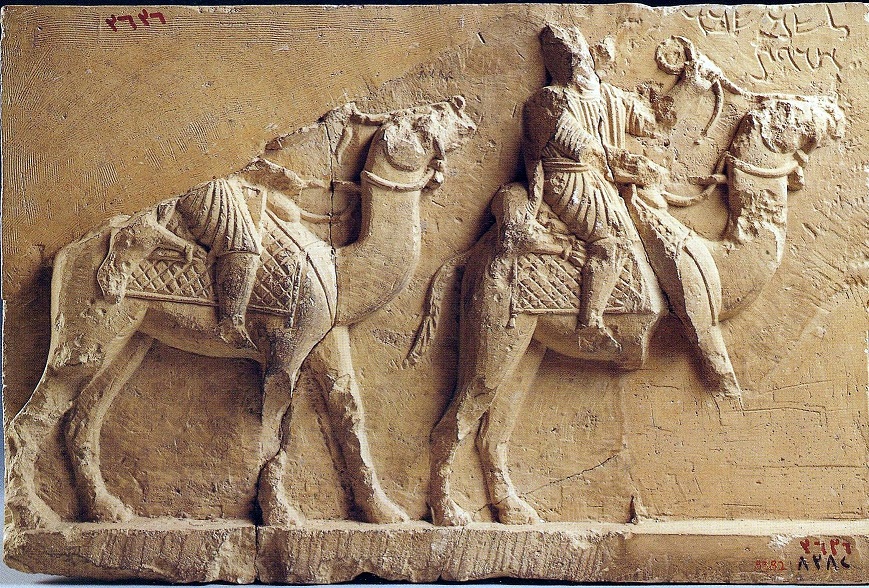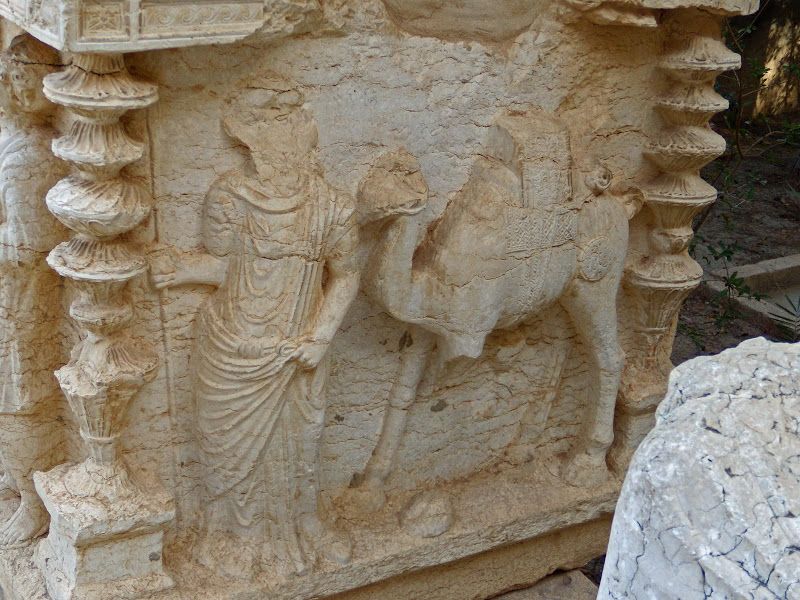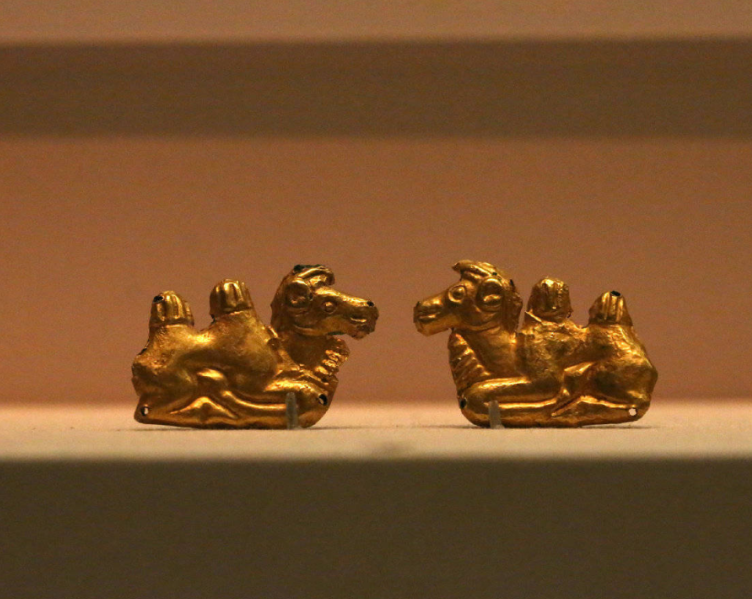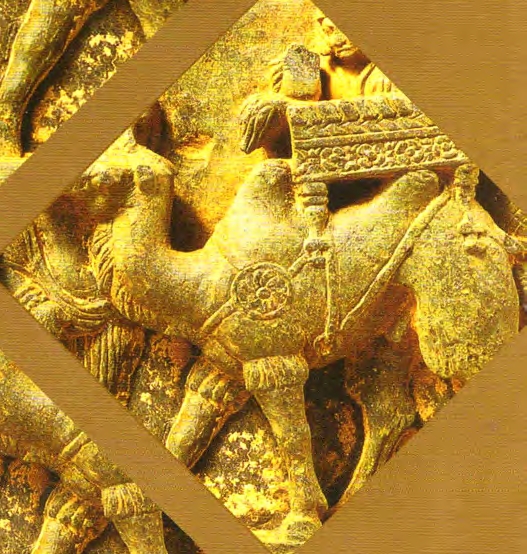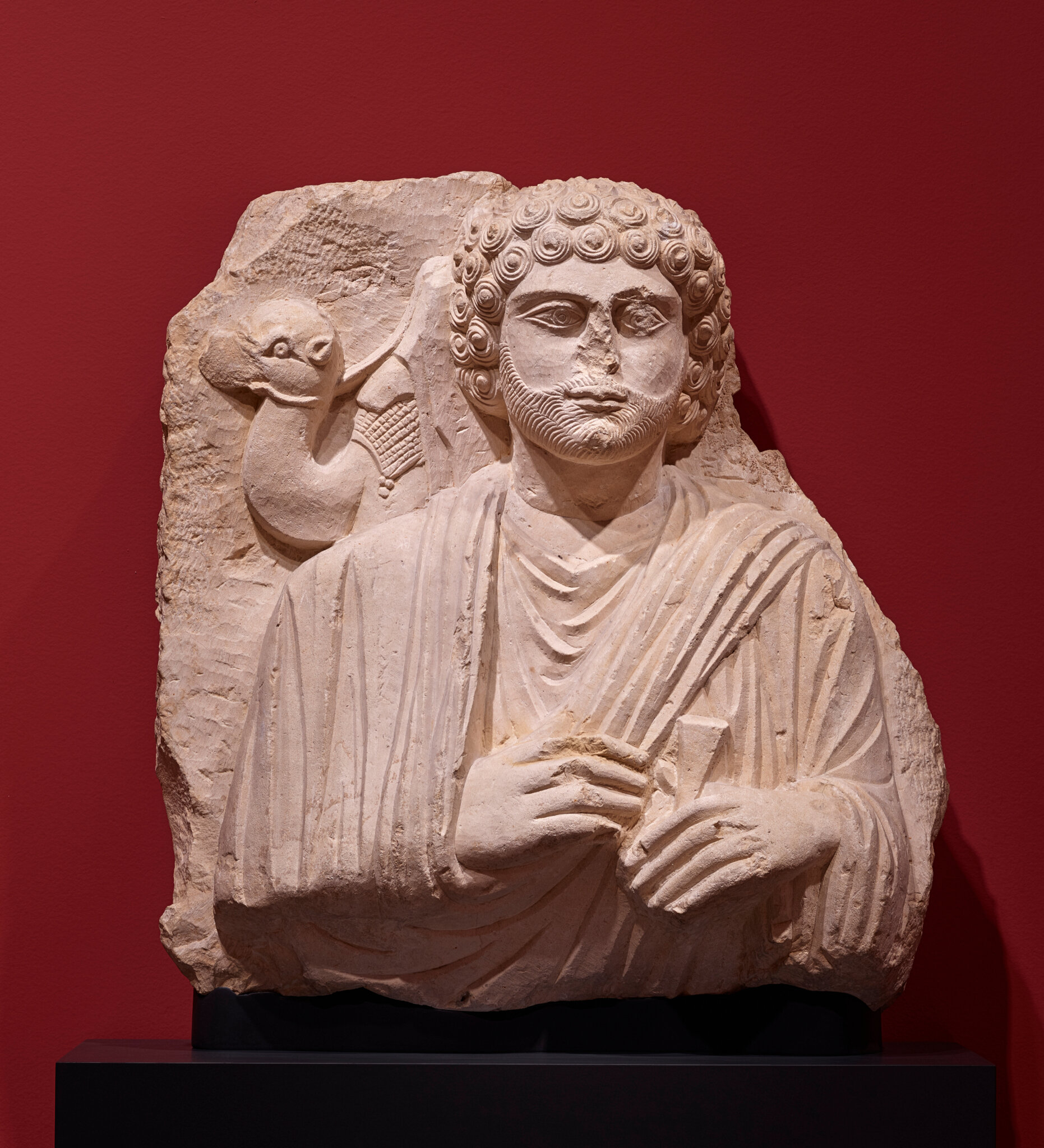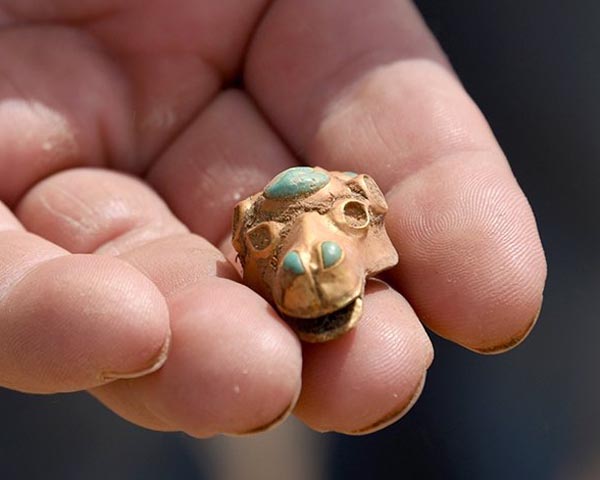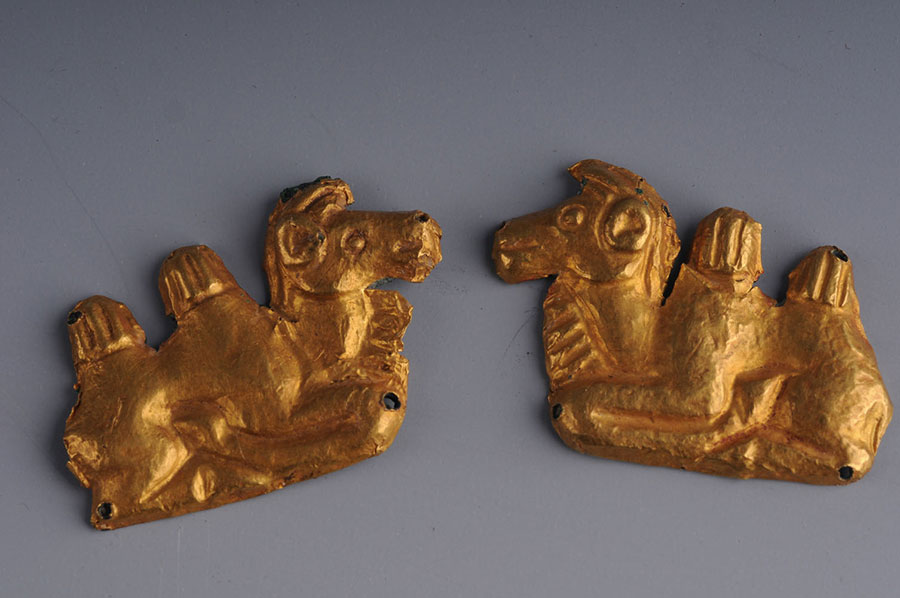
This relief, with a narrow, smooth fillet frame, originally appeared on the side of a sarcophagus. Depicted on it – with more of a drawn than a sculptural effect – is a dromedary with a high pack saddle, led by a camel driver. source
In Rome, Musei Capitolini, inv. no. MC 225 http://capitolini.info/scu00225/
“The slab, defined at the top by a strip, was originally supposed to decorate the side of a sarcophagus; offers the representation of a dromedary moving from left to right, preceded by a male figure, dressed in a short tunic and cloak, with a goad in his right and the end of the rope in his left hand.
The quality of the marble, the presence of the upper strip, the flattened rendering of the composition, which in the parts of the second floor is reduced to a contour line, suggest that the slab should have decorated the short side of a large sarcophagus.
It is also possible that the rest of the molded frame, recognizable at the thicknesses, defined a panel that had to take place on the forehead, while the representation of the deceased could be placed in the center.
Depictions of dromedaries in the Greek world replace those of camels starting from the 4th century BC: they meet on a significant number of objects of different functions and nature, from statuettes to votive reliefs, from coins to historical reliefs, from household objects to mosaics .
Dromedaries were used for the transfer of goods along the tracks of the arid areas of the East and Africa; the absence of the load, however, makes the possibility of linking our image to commercial activities doubtful; that in fact, rather than a load, it is a saddle covered by a saddle cloth that descends under the belly, is made probable by the comparison with the high saddles of the North Arabian type known through the Palmyrene reliefs which, in the profile view, they can even exceed the height of the heads of dromedaries.
The flattened rendering of the relief, the use of an engraved line that in some parts defines the figures, the treatment of the beard and, in general, the formal characteristics of the head of the character with the dromedary, not least the consistent height of the chest, lead to place the fragment in the first half of the third century AD (200-250).”



